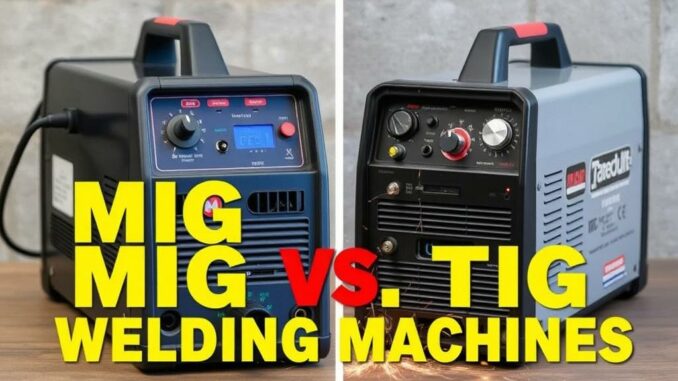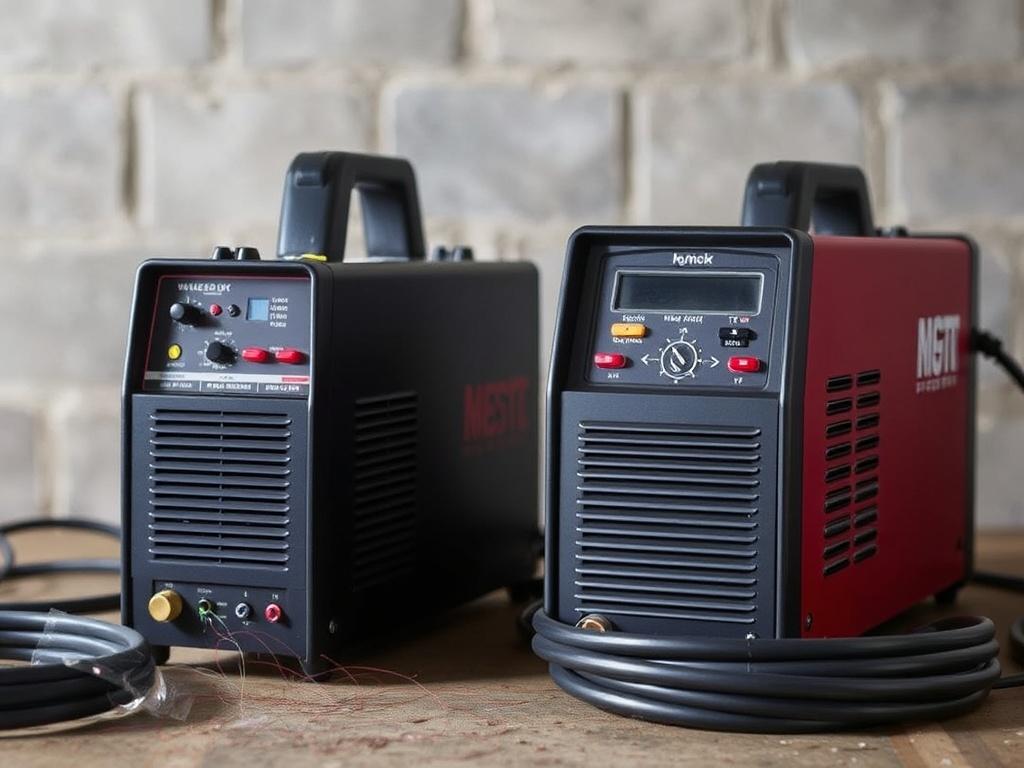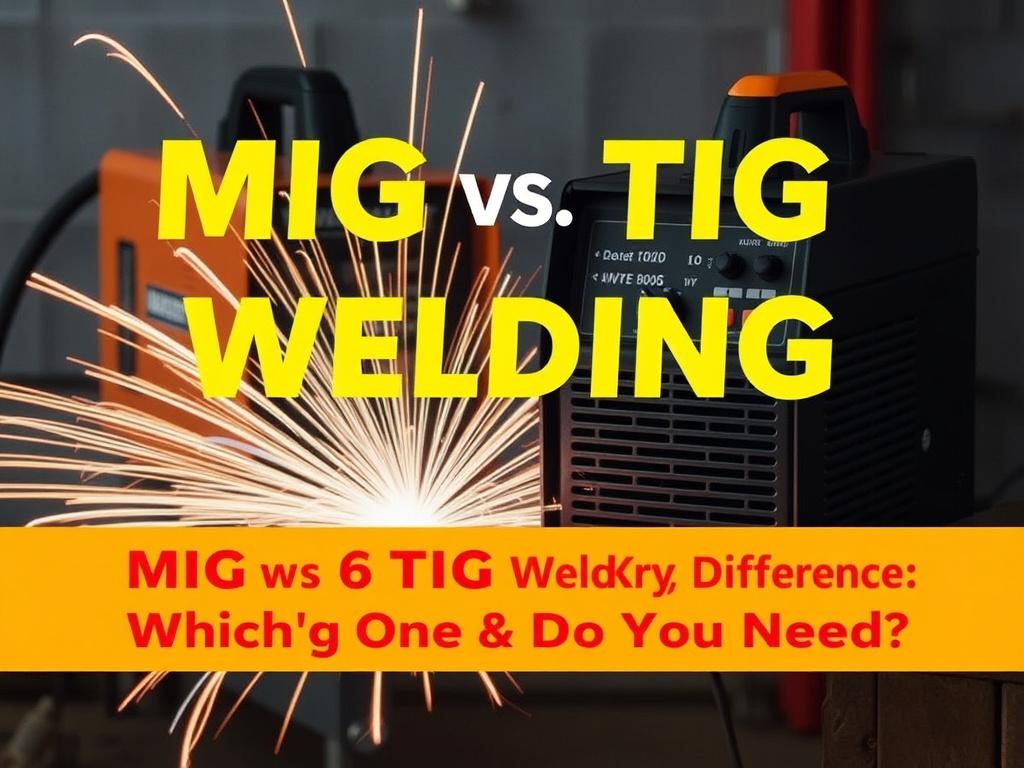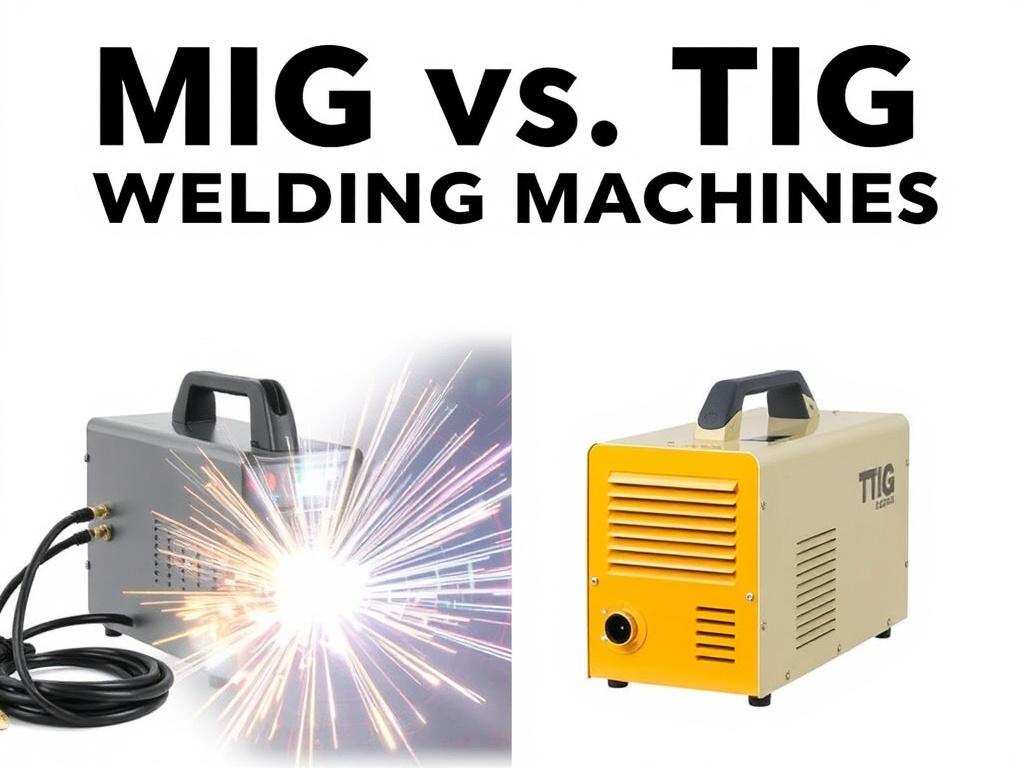
Welding is an essential skill in many industries — from automotive to construction, manufacturing to art, knowing how to choose the right welding machine can make all the difference in your projects’ success and your overall satisfaction. When diving into the world of welding, two of the most popular types of machines you’ll encounter are MIG (Metal Inert Gas) and TIG (Tungsten Inert Gas) welders. But how do you know which one suits your needs best? This comprehensive guide will walk you through everything you need to understand about MIG vs. TIG welding machines, helping you make an informed choice based on your experience level, project requirements, and budget.
Introduction to MIG and TIG Welding

Before jumping into the differences and deciding between MIG vs. TIG welding machines, it’s important to understand the basics of each process. Both MIG and TIG are forms of arc welding, which means they use an electrical current to create a heat source capable of melting metals together. However, the way they deliver filler material and the control they offer differ significantly.
MIG welding uses a consumable wire electrode that is continuously fed through a welding gun and into the weld pool. This wire melts and forms the weld. Additionally, an inert shielding gas like argon or CO2 protects the weld area from contamination. Because the wire is fed automatically, MIG welding is generally faster and easier to learn, making it popular for both beginners and industrial applications requiring high-speed production.
TIG welding, on the other hand, uses a non-consumable tungsten electrode to produce the arc, with the filler metal added manually by the welder using a separate rod. The shielding gas is typically pure argon. This setup gives the user fine control over the weld pool, allowing for precision and thin, high-quality weld beads. TIG welding is often chosen for delicate or thin materials and specialized projects requiring a superior aesthetic finish.
The Key Differences Between MIG and TIG Welding Machines

The choice between MIG vs. TIG welding machines boils down to several important factors including speed, precision, ease of use, and the types of metal you’re working with. Let’s explore these core differences step by step.
1. Welding Process and Technique
MIG welding involves a semi-automatic process where the wire feeds itself. This means less manual intervention, and with the aid of the shielding gas, the welds are clean and consistent. MIG machines use flux-cored or solid wires that continuously feed during welding, which speeds up projects significantly.
TIG welding, being more manual, requires the welder to hold a torch with one hand and add the filler rod with the other, demanding more hand-eye coordination, skill, and patience. This is why TIG welding is often viewed as more challenging for beginners.
2. Speed and Efficiency
| Welding Method | Speed | Typical Use Cases |
|---|---|---|
| MIG Welding | Fast | Production line work, automotive repair, general fabrication |
| TIG Welding | Slow to moderate | Precision welding, aerospace, artistic metals, thin materials |
MIG welding is generally preferred when time and volume matter the most. In contrast, TIG welding is slower but produces higher-quality, sharper, and more aesthetically pleasing welds.
3. Metal Compatibility
Both MIG and TIG machines can weld various metals, but there are nuances regarding which metals are best suited for each.
- MIG welding: Excellent for mild steel, stainless steel, and aluminum. The process handles thicker metals better because the wire feed speeds up deposition.
- TIG welding: Best suited for thin metals like stainless steel, aluminum, magnesium, copper, and even exotic metals. TIG provides clean, controlled welds ideal for delicate applications.
Deciding between the two machines depends on the materials you plan to work with most frequently.
4. Weld Quality and Appearance
TIG welds are often considered a work of art, with smooth, clean, and highly precise bead appearances. The technique allows the welder to focus on each little detail, which is vital when the aesthetics of a project are paramount. TIG welding produces fewer spatter and cleaner welds without additional finishing.
MIG welds are strong and effective but tend to produce more spatter and larger beads. The finish may require grinding or cleaning afterward, especially in projects where weld aesthetics are critical.
5. Equipment Cost and Maintenance
| Welding Machine Type | Average Cost Range | Maintenance Required |
|---|---|---|
| MIG Welding Machines | $300 – $1,500+ | Moderate; replace wire spools, check the gas supply, clean the nozzle |
| TIG Welding Machines | $1,000 – $3,000+ | Higher; maintain tungsten electrodes, replace various consumables, ensure clean gas supply |
MIG welding machines generally have a lower entry price making them very attractive for hobbyists and small businesses. TIG machines are more expensive due to their complexity, though they are an investment for precise work.
6. Skill Level and Learning Curve
If you are a beginner and want to get started quickly, MIG welding is the easier process to learn. The automatic wire feed and the lack of filler rod handling speed up learning.
TIG welding demands patience and practice. It is recommended to build TIG skills after gaining MIG experience, especially if you want to tackle more complicated welding projects.
Detailed Comparison Table: MIG vs. TIG Welding Machines
| Aspect | MIG Welding Machine | TIG Welding Machine |
|---|---|---|
| Process | Wire electrode fed automatically, filler metal flows continuously | Non-consumable tungsten electrode, manual filler rod addition |
| Speed | Fast; efficient for large projects | Slower; ideal for detail-oriented jobs |
| Skill required | Beginner to Intermediate | Intermediate to Advanced |
| Metals commonly welded | Steel, stainless steel, aluminum (with spool gun) | Steel, stainless steel, aluminum, copper, magnesium |
| Cost of equipment | Lower to moderate | Moderate to higher |
| Result quality | Strong, with possible spatter; needs cleanup | Superior quality, little to no spatter, professional finish |
| Maintenance | Wire feed system maintenance, nozzle cleaning | Electrode sharpening, torch and gas system upkeep |
Factors to Consider When Choosing Between MIG and TIG Welding Machines
With all the characteristics and differences between MIG vs. TIG welding machines laid out, your decision should come down to your particular needs and circumstances. Below are the key factors to weigh before making the purchase.
1. Purpose of Welding Projects
Are you working on heavy fabrication, automotive frame repairs, or industrial maintenance? MIG welding machines excel in these faster-paced, high-deposition scenarios. Alternatively, if your work involves delicate tasks like bicycle frames, artistic metal sculptures, or aerospace parts, a TIG welder might be the better investment.
2. Material Thickness and Type
For thicker metals, MIG welding’s faster melt rate is beneficial. For thin sheets or exotic metals, TIG offers superior control. Consider your typical materials and evaluate how each machine fits the bill.
3. Budget Constraints
Start-up costs and ongoing expenses differ significantly. If you are constrained by budget, a MIG welding machine provides great versatility at a reasonable price. TIG welding machines, though more costly, can pay off by meeting higher quality demands.
4. Skill Level and Learning Commitment
MIG welding is beginner-friendly and suitable for hobbyists and small repair work. TIG welding demands time to master but rewards with more professional results and flexibility over materials and settings.
5. Portability and Power Supply
If you plan to do mobile welding or occasional site work, consider the weight, size, and power requirements of each machine type. Some MIG welders come with lighter setups, whereas TIG units may require more specialized power supplies.
Pros and Cons Summary of MIG vs. TIG Welding Machines
- MIG Welding Machines
- Pros: Faster welding speed, easier to learn, lower cost, good for thicker metals
- Cons: More spatter, less precise welds, less ideal for thin metals
- TIG Welding Machines
- Pros: Superior weld quality, precise control, minimal spatter, versatile metals
- Cons: Slower process, higher cost, significant learning curve
Common Applications for MIG and TIG Welding
Understanding where each welding machine shines can help you align your purchase with real-world usage scenarios.
Typical Uses for MIG Welding Machines
- Automotive bodywork and chassis repairs
- Industrial fabrication and heavy steel construction
- Farm equipment and agricultural machinery repair
- Home metalwork and DIY projects on thicker metals
Typical Uses for TIG Welding Machines
- Aerospace and aircraft parts welding
- Artistic metal sculptures and fine metalwork
- Bicycle frames, motorcycles, and thin-walled tube welding
- Pipe welding and pressure vessel construction
Tips for Getting the Most Out of Your Welding Machine
Regardless of choosing MIG or TIG, here are some practical tips to enhance your welding experience and results:
- Practice Regularly: Skill development is crucial, especially for TIG welding. Spend time practicing bead control and welding angles.
- Choose Proper Safety Gear: Always use a welding helmet with the correct shade, gloves, protective clothing, and work in a ventilated space.
- Maintain Your Equipment: Regularly clean and inspect your welding machine, replace consumables promptly, and monitor gas supplies.
- Select the Right Settings: Adjust voltage, amperage, and wire feed speed or filler rod technique to match the material and thickness.
- Use Quality Consumables: From electrode wires to shielding gases, good quality materials can drastically improve weld results.
Final Thoughts: Which Welding Machine Should You Choose?

Choosing between MIG vs. TIG welding machines essentially comes down to your specific welding needs, skill level, and budget. MIG welding machines provide a straightforward, rapid approach perfect for beginners and heavy-duty projects. TIG welding machines offer unmatched precision and clean welds but require more expertise and a higher initial investment.
If you are starting out or need to handle thicker metals with speed and effectiveness, a MIG welding machine will likely serve you well. However, if your work focuses on thin metals, specialized materials, or you desire the finest possible weld quality, investing in a TIG welder is a choice you won’t regret.
Whichever route you take, understanding the strengths and limitations of each machine ensures you get the right tool for your welding journey. Happy welding!
